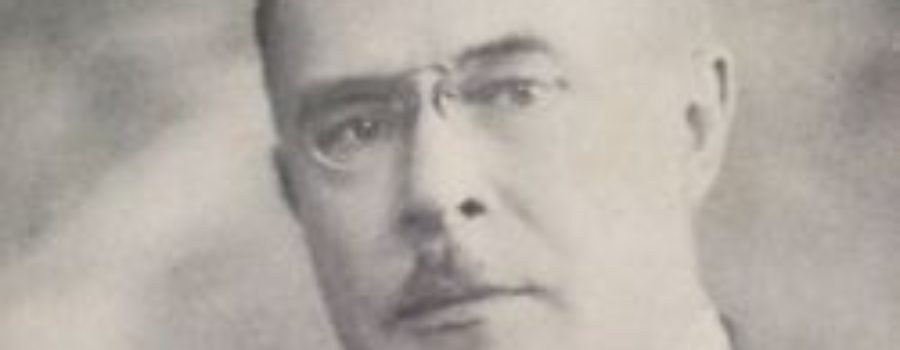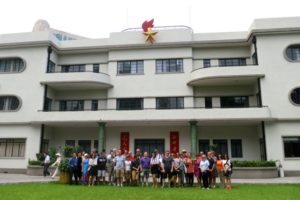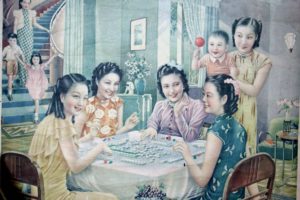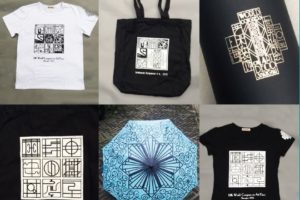Baron Reginald d’Auxion de Ruffe, a Paris-born aristocrat who lived in an elegant villa on the former Rue Massenet in the heart of the French Concession, cut quite a swath through Shanghai society. His elegant wife was the former Mademoiselle Morel, daughter of the governor of French Indochina. The Baron was lawyer and author (Is China Mad? 1928; China and the Chinese: The New Yellow Peril,1926) and so much more. In a 1933 official biography of Shanghai notables he was described as a “distinguished practitioner of the law, war veteran of notable record, author, journalist, sportsman, and connoisseur of Chinese art…a man of many and widely varied interests.” This was to prove prophetic, as in later life the details of the baron’s private and professional interests grew both more and more contentious — and murky.
By the mid-1930s the baron had begun to align himself with rightist, pro-Nazi organizations in France and with the pro-Japanese factions in Shanghai. On a June morning in 1941 as he climbed the stairs to his office on Rue du Consulat No. 25 (Jinling Road) two Chinese men shot him three times in the back and then fled. This ambush of a foreigner by Chinese shocked Shanghai’s Western community.
There were wild rumors about the baron and his many enemies and that his execution could have been arranged by a high-ranking Frenchman with whom he had had a business dispute. The accused gentlemen was Felix Bouvier, the somewhat shady entrepreneur who was the owner of the Art Deco Hai Jalai Auditorium and Canidrome, the latter Shanghai’s greyhound racing track.

And what does all this have to do with Art Deco? Felix Bouvier, the accused, was part owner of several Art Deco buildings, including the legendary Canidrome.
The two had been in conflict for years, first over business matters and later over politics — Bouvier supported General de Gaulle and de Ruffe was aligned with Vichy collaborator, Petain. Perhaps not surprisingly, an investigation by the French Concession’s detectives came to naught. The case was never solved…
…but according to author/historian/blogger Paul French, “of course Bouvier whacked the Baron!” (French, the author of Midnight in Peking, knows a thing or two about solving historic unsolved China murders.) He explains, “it’s a case of ‘nasty guy goes nice; nice guy goes nasty’ – and in so doing deserves a medal.” It’s a fascinating tale – read on:
“Bouvier was a dodgy banker – close friends with other shady characters like [Shanghai mob boss] Big Eared Du and Carlos Garcia, the Mexican gambling magnate. Garcia did two years in Shanghai’s notoriously harsh Ward Road Gaol after his Wheel casino was shut, and vowed vengeance on the Brits who stitched him up – his casino took money away from British dog racing tracks at Luna Park. He got his revenge via Bouvier: the financier was the front man for Du and Garcia in building and owning both the Hai Alai Fronton and the Canidrome complex, and the latter quickly put Luna Park out of business.
“In the end, though, it came down to politics. Come 1940, dodgy Bouvier went to the Free France and de Gaulle (his son became a famous resister in France) and hated the Vichy clique. The Baron went with the Vichy clique and the right fascist administration. Bouvier, disgusted by the Baron’s stance, got a couple of Du/Green Gang hit men to kill the Baron as a high profile Vichyite, sending a message. The Baron got killed, and a good thing too!
PS: Bouvier did the paperwork for Joe Farren’s nightclub and hid the fact that Joe’s partner, Jack Riley, was a felon – dodgy in business but no anti-Semite, unlike the Baron and Vichy.
PPS: Bouvier died in 1945 in Shanghai. His son, George became a resistance fighter with the Free French during the war, returned to Shanghai after the liberation of France before being put under arrest by the Communists, accused of being a “financial criminal”, stripped of his assets and deported from China.”
-Tess Johnston, with thanks to Paul French for the fascinating backstory!
About the Author: Tess Johnston first came to Shanghai in 1981 to work at the American Consulate General and in 1996, after over thirty years in the diplomatic service, she retired and stayed on to research, write, and lecture. She and her co-author, Shanghai photographer Deke Erh (Erh Dongqiang), have published 25 books, including fifteen volumes on Western architecture and the expatriate experience in old China and the seminal Shanghai Art Deco (now out of print).
This is the second in our Murder, Most Art Deco series. For the previous post, on the unsolved disappearance of Alexandre Leonard, click here.
References
“The D’Auxion de Ruffe Affair”, Canal Blog, 07-30 2013. For more details and theories as to why the Baron was assassinated, check out Didier Pujol’s two-part story.
Nellist, George, ed., Men of Shanghai and North China, Ed. Shanghai: The Oriental Press, 1933.
“Jai Alai Made Some, Ruined Others”, Shanghai Star, 11-08 2001







Most Commented Posts